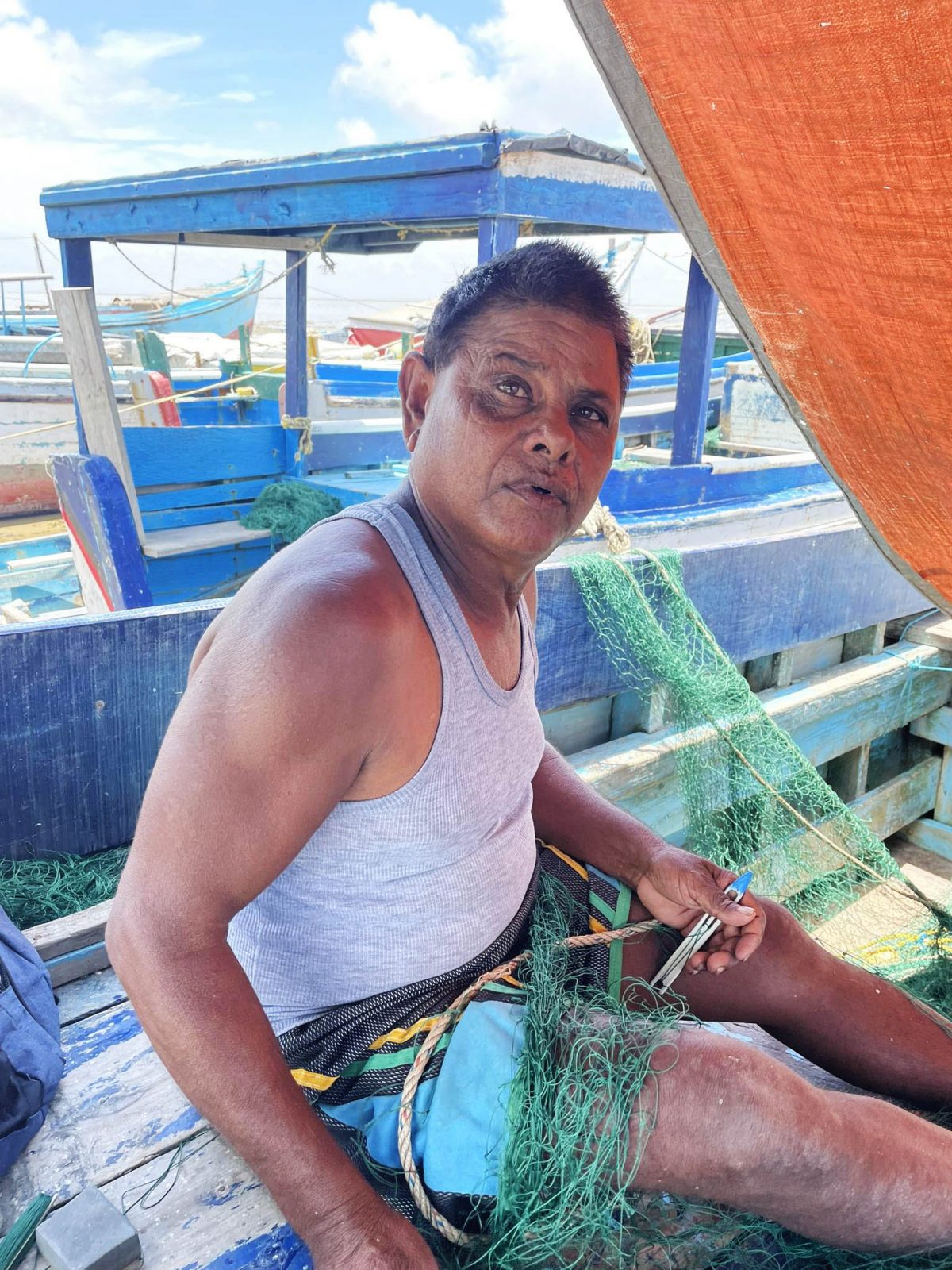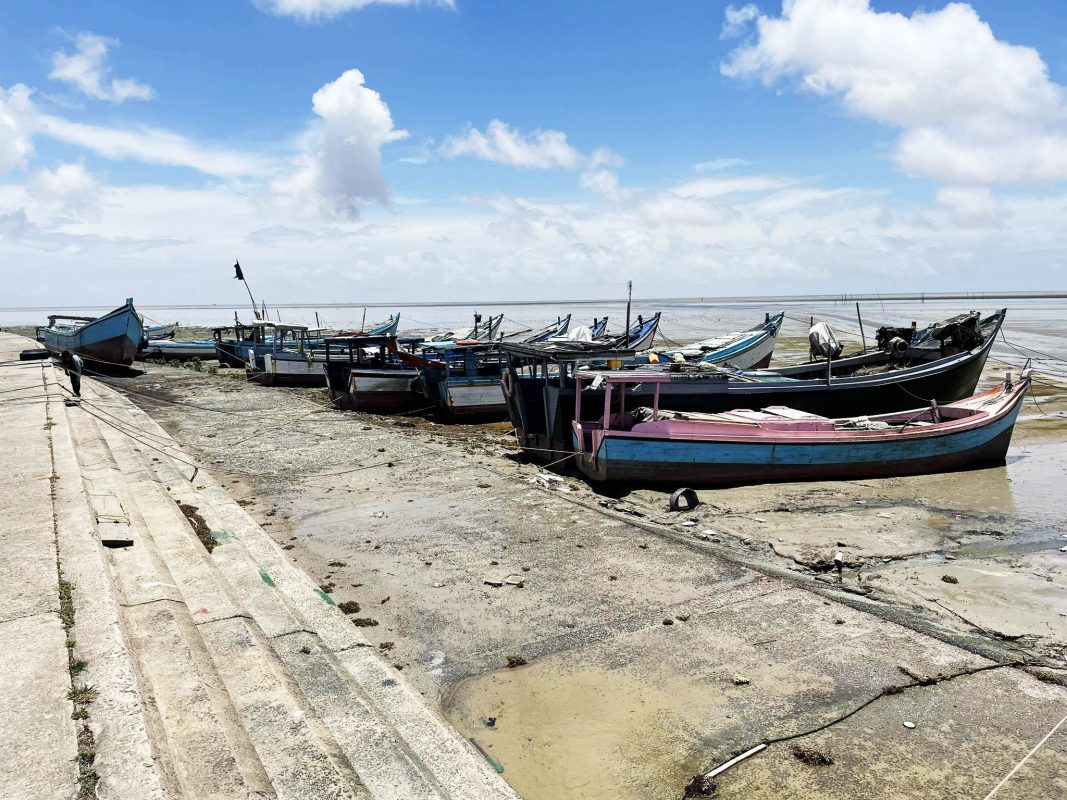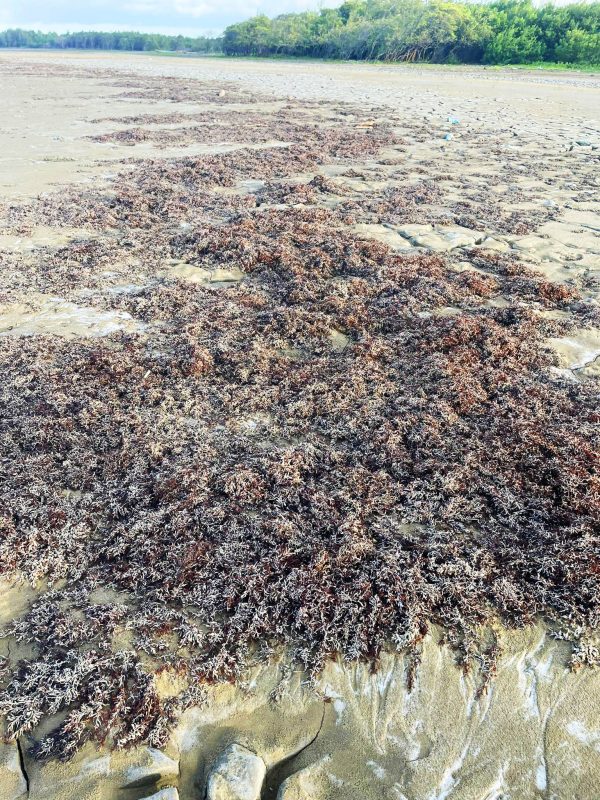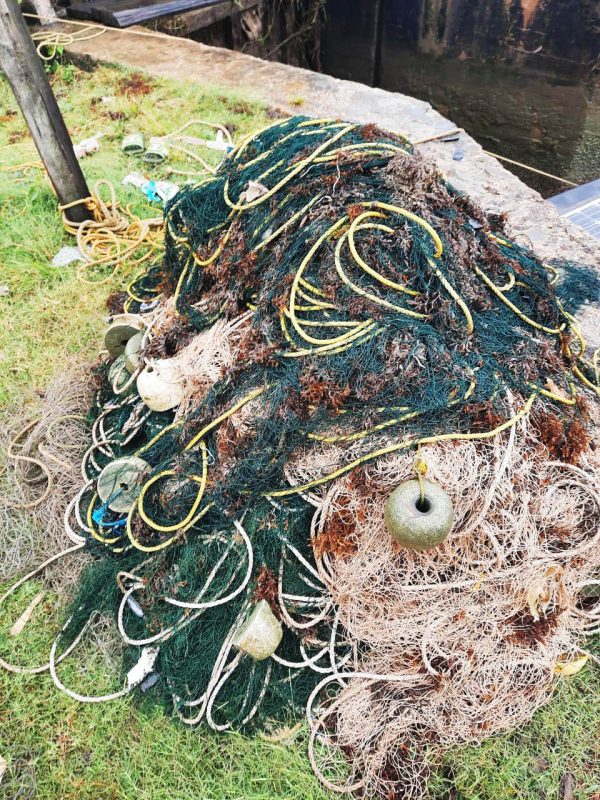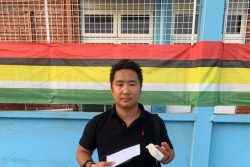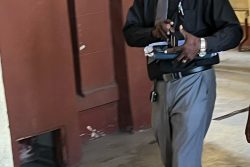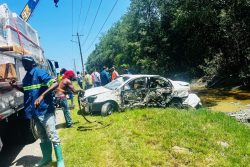The increasing presence of sargassum seaweed on Guyana’s coast has put fishermen in further turmoil. The invasion of the brown floating algae, which has increased this year, has forced fishers, in some instances, out of their traditional fishing grounds and placed a dent in their catches.
The impact has been significant on artisanal fishers, who fish across the coast, with the seaweed getting trapped in their seines and engines, causing damage.
“Right now this thing bothers us bad… all over fishermen are complaining. High heaps come in at times… but fishermen does gotta be brave and go out at sea because this is what they live on,” Jamal (only name given) a fisherman from Mahaicony said.
Fishermen explained that while this has been an issue for them in the past, the extraordinary amount of seaweed in fishing areas this year has placed them in a vulnerable state, threatening their livelihoods to some extent. The influx has resulted in fishermen either cutting short their trips or spending long days at sea in a bid to increase the volume of their catch. However, despite the decrease in catches coupled with the high cost associated with catches, fishermen point out that they don’t get higher prices for fish.
Chairman of the No 66 Fisheries Co-op Parmeshwar Jainarine said it was a new threat to fishermen and boat owners. He stated that when the seaweed gets entangled in their seines they are unable to generate a proper catch. He explained that in many instances, fishermen suffer downtime as hours and in some cases days, are spent clearing their nets of trapped sargassum.
“Sometimes if all the seine is entangled with seaweed, the fishermen have to come back to shore and spend time clearing their seine. It takes 3-4 days for that to be done and they are not paid for those days… This is a significant threat to our livelihood,” he stressed. He went on to state that for boats operated by at least two men, it is much more difficult for them as they suffer from tremendous setbacks. The cost for a trip at sea has increased by 50 to 60 per cent as fishers now have to cater for additional days at sea and go further distances to have a productive catch.
Deonarine Singh, a fisherman of Hampton Court, Essequibo Coast, said the situation was one of the worst in Guyana. He explained that recently fishermen have been returning with more sargassum in their nets than fish. “It is plenty plenty seaweed out there… making it one of the worst seasons we ever see,” he said.
At Hampton Court, which is the second largest landing site in the country, Singh explained, fishermen spend more time clearing and mending their seines than plying their trade. Even if they spend 10 to 12 days at sea, the volume of their catch is still small.
Artisanal fisher Simon Ramsarran, who plies his trade at Rose Hall, Corentyne, said when the weed first started to appear they were able to manoeuvre among their regular fishing grounds. But in the months of March and April, it increased to the extent of forcing him to halt his operations.
“I can remember one week I didn’t go to sea because it was so much. I work alone and when you have to pick up the seine it is heavier than usual. That was a strain on me because it was more seaweed than fish,” he lamented.
Guyana and Beyond
The impact of sargassum has created a ripple effect throughout the industry, not only affecting fishermen, but also those who depend on the fishing industry for their livelihoods. Fish vendors, processors, and exporters as a result, this publication understands, all have to share a limited amount of fish due to the decrease in catches.
Sargassum has been washing up on coastal shores since February and increasing daily according to fishermen. This issue is not isolated to Guyana, as the tourism and fishing sectors are affected by the presence of sargassum across the Caribbean.
Marine biologist Maria Fraser, in an invited comment, explained that the seaweed is a plant and like every plant it requires sunlight (photosynthesis), water and nutrients.
Sargassum seaweed has always been present but in recent years scientific research by the National Oceanic and Atmospheric Administration (NOAA) has shown that it has been growing in abundance since 2010 and the Caribbean region has been the most affected.
According to Fraser, the Caribbean region is an ideal habitat for seaweed to reproduce. “During the spring and summer [March-June] seasons sargassum is in its full prime. The Amazon Basin releases large amount of nutrients into the ocean making the ideal conditions for seaweed to grow,” she said. “In recent years research proved that an increase in ocean temperature and an increase in the release of agricultural runoff from the Amazon into the ocean results in a high algae bloom.
“With the Caribbean coastal dynamic process (waves, wind, current), sargassum can be seen washing along the shoreline of many countries such as Mexico, Barbados, Trinidad, Brazil, et cetera, including Guyana, [among others].”
Fraser explained further that its flourishing growth can also have a significant negative impact on other forms of marine life and fishing operations.
“Large amounts of sargassum can cover and smother coral reefs, mangroves, seabed, which can disrupt the delicate balance of the ecosystem and cause a decline in fish populations (basically depriving marine life of oxygen,” she related.
However, despite sargassum being a nuisance to the fishing and tourism industries, it does play a key role in supporting marine life, acting as a jungle by being a nursery and habitat for many organisms such as fishes ( Mahi Mahi), eels and turtles.
Asked how fishermen can combat this new plague, she recommended the use of larger nets with wider openings, or, if they can afford it, boats with special equipment to collect and remove the seaweed.
Climate justice
Shedding light on the climate impacts of seaweed presence, Fraser noted that it places countries in vulnerable positions if they cannot afford to clean up the mess left behind.
“In terms of climate justice, the increase of sargassum in Guyana and other countries in the region puts these nations in a vulnerable situation. The impact of sargassum on fishing operations can have significant economic implications for… those who may not have the resources to adapt to these changes,” she said.
Additionally, she pointed out that the presence of sargassum can contribute to coastal erosion, and affect natural sea defence – mangroves – as well as tourism, which can further impact the economy.
“The rotten-eggs smell and the unsightly scene along the shoreline speaks for itself. Thus, the issue of sargassum highlights the need for global action to address climate change and its impacts on vulnerable communities,” she noted.
Alternatively, the marine biologist was quick to point out that with its increased growth and presence, government and the private sector can look at ways in which they can commercialise sargassum. She said that countries like St Lucia and Mexico have been commercialising seaweed and Guyana can look at their experience and adopt similar measures.
“If sargassum is processed, it can be used as natural fertilizer, forage for animals, biofuel. These have been used as by-products in food ingredients and cosmetics (most dominantly in toothpaste)… the Ministry of Agriculture or the private sector can play an integral role in fully understanding the uses and composition of this sargassum and have it commercialised,” she emphasised.
The University of South Florida Optical Oceanography Laboratory, in its April bulletin, said approximately three million tonnes of sargassum have been washed ashore.
“Looking ahead, the total sargassum quantity is expected to increase over the next few months, with impacts of beaching events in the Caribbean Sea and the Gulf of Mexico worsening,” the report stated as it explained that sargassum aggregations east of the Antilles Islands and in the Caribbean Sea will continue to accumulate and migrate westward.
